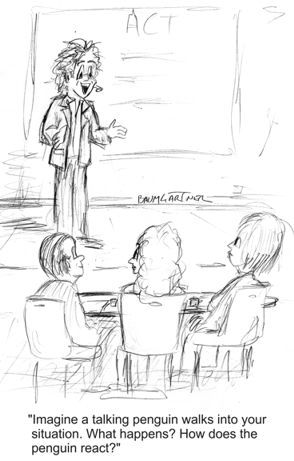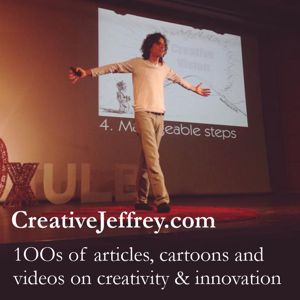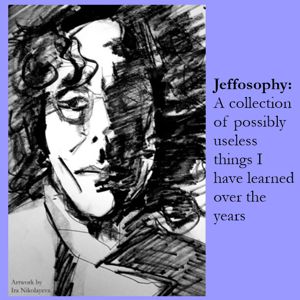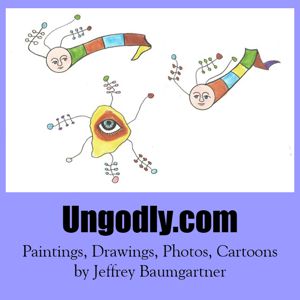
How to Run a Successful Workshop
By Jeffrey Baumgartner
If you are involved in organisational creativity and innovation, it is likely that you occasionally have to organise workshops on the topic. If so, I can offer you some advice based on years of experience deliveringcreativity workshops in businesses, government bodies and non-profit organisations globally. I also co-founded and co-manage the Brussels Imagination Club, a platform for experimentation in training and facilitation; and a place where I have seen dozens of people of varying skill presenting workshops on all kinds of topics.
In short, I know a thing or two about delivering a workshop and I am delighted to share some of that knowledge with you.
Know Your Subject Matter
No matter how carefully you prepare your workshop, participants will ask questions. They will work out very quickly whether you really know what you are talking about or if you are just giving a canned presentation. If you are required to do a workshop on a topic you do not know well, read up on it.
A Workshop Is Not a Talk
The last time I spoke at an international conference, where I also sat in on some workshops, I was surprised that every single one of those workshops was an extended lecture. There were no exercises, no group work, no practice. Just too much talking and too many PowerPoint slides. The only hint of interactivity was inviting the audience to ask questions during the lecture. A long talk is not a workshop. Worse, a long talk is boring. A workshop should include individual and group exercises as well as a lecture. Aim for a 50/50 ratio of talk to exercises.
Structure
A good workshop structure runs like this
- Introduction. Tell the audience what you are going to do.
- Body. Do it, ideally in three parts.
- Conclusion. Tell the audience what you have done.
Magic Numbers
There a handful of important numbers in running a workshop. I have known these numbers so long I can no longer recall the source or whether there is scientific accuracy in the numbers. I do know that these numbers work for me and I suggest you use them as guidelines yourself.
Seven Second Rule
It is said that you have seven seconds to capture the audience's interest. I reckon you have a few more than that. Nevertheless, if you start off your workshop with a boring introduction or you are unclear about the purpose of the workshop, you will struggle in the remainder of the workshop to capture the audience's interest. On the other hand, if you have an impressive start to the workshop, you will have the participants' attention and interest from the beginning. They will even forgive you if you mess up something later.
Clearly, you should plan an opening that that will knock everyone's socks off. It could be a surprising fact, a bold claim about what you intend to accomplish or a question to the audience. If you are comfortable being funny, say something to make the audience laugh (though avoid telling old jokes).
Once you have your opening in mind, practice it again and again until you know it instinctively. In fact, I recommend you relentlessly practice the first five to ten minutes of your workshop to ensure the opening is engraved into your mind. Why? Because if you get stage fright (and everyone does), it will probably be most intensive when you first step before the audience. If you know your first five to ten minutes, you will get your audience's interest and fall into the rhythm of your workshop. Once that happens, stage fright becomes less of an issue for most people.
20 Minute Attention Span
If you are speaking, you can expect to hold your audience's interest for about 20 minutes before they begin to lose interest -- and that is assuming you are interesting. If you are boring, you have less time. Break your workshop into chunks of maximum 20 minutes speaking followed by exercises followed by another 20 minutes speaking and so on. This ensures that you remain interesting. It also gives participants the opportunity to put into practice what you have told them immediately which aids retention dramatically.
Rule of Three
Apparently, the human mind likes threes. It remembers groups of three better than pairs or bigger groups. Try to exploit this in your workshop, for example: by breaking the topic into three parts, by presenting three step methods or by breaking key points into three sub-points.
By the way, did you notice that last sentence included three examples? The rule of three is also great to use in writing!
Randomise Group Members
When participants enter the workshop space, they tend to sit next to people they work with -- usually others in their division. However, when you put people in groups to do exercises, it is best to mix them up so that people are working with less familiar colleagues. Doing so will spur more creative thinking and build new connections within the organisation -- an added value from your workshop.
One of my favourite ways to randomise group members is to make up themed cards. For example, on one set of cards, I have words like coffee, tea, wine; on another set, words like apples, pineapples, grapes; and so on. I mix up the cards and hand them out randomly. Then I simply tell participants to find their groups without a word of explanation. Everyone needs to stand up, walk around and compare cards in order to work out the group themes and to which group they belong.
Groups Do Not Always Need to Present their Results
After groups finish their work, facilitators often feel that each group must present their results to the others. However, this takes up considerable time. Moreover, group members tend to be more focused on their own presentations than on paying attention to the other groups' presentations.
In fact, you can often skip the group presentations and move on to the next part of your workshop. However, if you do skip the presentations, there are two things you should do. Firstly, while the groups are working, you as should visit each group, listen to their conversations, ask questions and offer advice. Secondly, groups should be preparing some kind of documentation of their work. For instance, in an anticonventional thinking workshop, groups should be documenting their goal, creative vision and implementation plan. Typically the documentation is given to you or the relevant manager at the end of the workshop. In an anticonventional thinking workshop, for instance, the groups' creative visions can be developed into projects.
On the other hand, If you do want groups to present their results to each other, devise an interesting and time-controlled way to do so. For instance, have them tell a story or perform a roll-play limited to five minutes; have them prepare a poster and explain the results; or have them build a simple prototype and present it in two minutes.
Be Enthusiastic
I have delivered, seen and participated in many workshops at the Brussels Imagination Club. Over the years, I have noticed that the single most important characteristic of a good workshop is enthusiasm of the facilitator. If the facilitator is excited about the subject it becomes infectious and the audience becomes excited too.
If you are forced to deliver a workshop on a topic that does not excite you, find a way to make it exciting. You might do this by finding something interesting about the topic or you might do it by finding an original way to present your workshop.
Once you have the enthusiasm, everything comes together rather easily; and with my suggestions in this article, you should find it easy to put together a great workshop!




